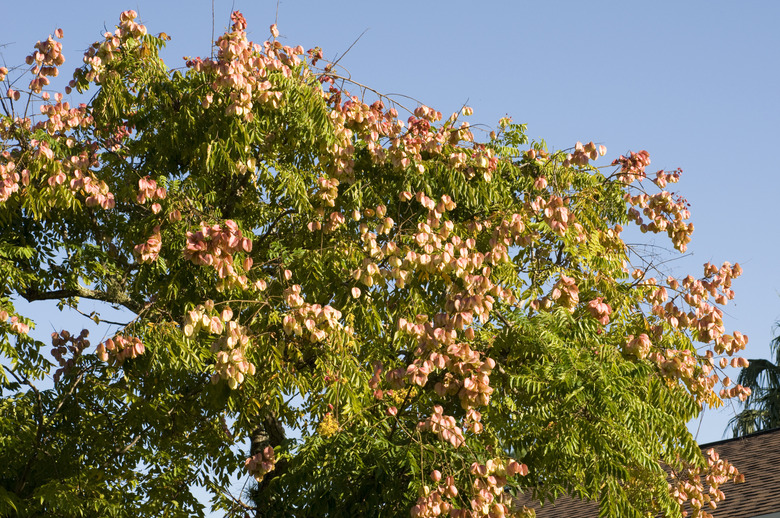How To Kill Chinese Tallow Trees
Nonnative Chinese tallow trees (Triadica sebifera) survive and spread with tenacity that's disheartening if you're trying to restore native species and eliminate invasive pests. Removal isn't impossible but successfully killing Chinese tallow trees, which grow in U.S. Department of Agriculture plant hardiness zones 8 through 10, requires a combination of chemical and manual control, along with timing and some persistence.
Get Them Early
You can kill and remove small Chinese tallow trees less than 3 feet tall with a shovel and a saw. Cut away the canopy and trunk as close to the soil line as you can get using a small tree saw. With the canopy gone, dig out the roots, getting as much of the mass as possible. When you're done, soak your saw and any clippers you used in a 10 percent solution of bleach mixed with water for five minutes.
Cut the Canopy
Cut down trees 6 to 8 feet tall or less using a tree saw. For anything larger — Chinese tallow trees commonly grow 35 feet tall — it's important to hire a professional tree service to prevent damage to you or your property. With the exception of the active seed-producing season in late summer and early fall, you can remove Chinese tallow trees at any time of year. Ideally, try to get it out before late summer and early fall when seed production peaks.
Prevent New Growth
Paint Chinese tallow tree stumps with herbicide within 30 minutes of cutting the tree using a herbicide containing triclopyr. Mix the herbicide with mineral oil at a rate of 5 ounces of herbicide per 1/2 gallon of oil, or according to the product's label. A clean, inexpensive paintbrush works well to paint the oil-herbicide solution on the trunk. Check the herbicide's label because some don't need to be diluted with oil and you can simply paint on undiluted weed killer. If new growth pops out of the trunk, cut it back as close to the ground as possible. Reapply the herbicide once a year until the stump dies. You can treat Chinese tallow stumps any time of year.
Stay Safe
Keep yourself covered when working with herbicides. Long sleeves, long pants and protective eyewear are all important. Avoid breathing herbicides as much as possible. Wash any brushes you use during the application process with dish soap and water, then throw them away. Also wash any containers you used to mix the herbicide. Once the container is clean, take the extra precaution of puncturing the bottom so it can't get reused for food or drink. Keep kids, pets and people away from treated Chinese tallow tree stumps until the herbicide is completely dry. Chinese tallow trees have toxic leaves and seeds. Avoid ingesting any part of the tree and keep children from touching or eating the fruits or leaves.
Minimize Future Spread
Any Chinese tallow tree that's been around for a few years will have offspring. Pull up new seedlings you find in the spring and through the growing season. With the ability to produce seeds just three years after germinating, it's important to keep ahead the seedlings. You can further prevent seeds from germinating by picking up any of the 1/4 to 1/2 inch gray seedpods you find on the ground.
